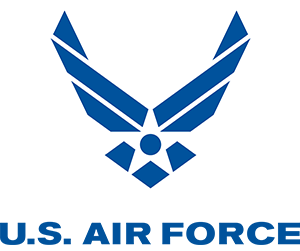
Service Branches
Work Environment
Physical therapy assistants work in hospitals, clinics, and rehabilitation centers.
-
Military Status
Enlisted
-
Median Military Salary This is the median, or the midpoint, of the salary range for this career.
$97,001
Military Salary Range Salary varies based on years of service, degree level, special pays, family status and location.
$32,806 - $219,270
Overview
Physical therapy assistants support physical therapists in providing physical therapy treatments and procedures. Under the direction of a physical therapist and following medical referral, these specialists administer physical therapy to decrease physical disabilities and promote physical fitness of service members. They treat disease, injury, or deformity by physical methods such as massage, heat treatment, and therapeutic exercise, rather than by drugs or surgery.
Military Training
All enlisted service members complete basic military training, which includes time spent in a classroom and in the field, and covers tactical and survival skills, physical training, military life and customs, and weapons training. Physical therapy assistants in the Military will gain skills through classroom study, including practice in providing patient healthcare, and on-the-job experience. Job-specific training content may include:
- Anatomy, physiology, and psychology
- Methods of therapy, including massage, electric therapy, and radiation therapy
- Handling and positioning of patients
- Principles of rehabilitation
- Patient care
- Working on a medical team
Helpful Attributes
- Ability to communicate effectively
- Interest in working with and helping people
- Patience to work with people whose injuries heal slowly
Air Force Physical Therapy: Healing the Force
Explore a path that blends care, leadership and the reward of helping people reach their full strength.
Length 2:10 View TranscriptTranscription
CHENEY: Success stories are really common in physical therapy. I love just seeing people get back to doing what they do. Like our counterparts on the flight line, they maintain the planes we maintain humans. My name is captain Scott Cheney; I'm a physical therapist and the physical therapy clinic at joint base Elmendorf Richardson. As a physical therapist, to be successful you have to care. You have to love what you do and love what the people you serve do. as a civilian therapist your job is to make money, we don't have those financial restrictions and need to see people a certain number of times to make a budget. If you like just sitting in the clinic and seeing patients all day active-duty Air Force is not for you. We have tons of equipment in our gym we have multiple tables and equipment lifting equipment running equipment I think the equipment is not necessarily as important as our hands and our eyes. Getting our hands on patients is incredibly rewarding when they walk in here and we can do certain things and they can walk out without a limp. As physical therapists in the Air Force we have the opportunity to get outside the walls of this Medical Group. We love treating patients and we love going to them as well. You're surrounded by really great leaders that have proven themselves over many years to get their experiences and glean things from them as well. We serve the people of this country and it's an honor to be part of something bigger than yourself. If you’re training to be a physical therapist and you're interested in getting out and experiencing lots of different things, the United states Air Force is for you.
Air Force Physical Therapy: Healing the Force
More careers in this field
See all











